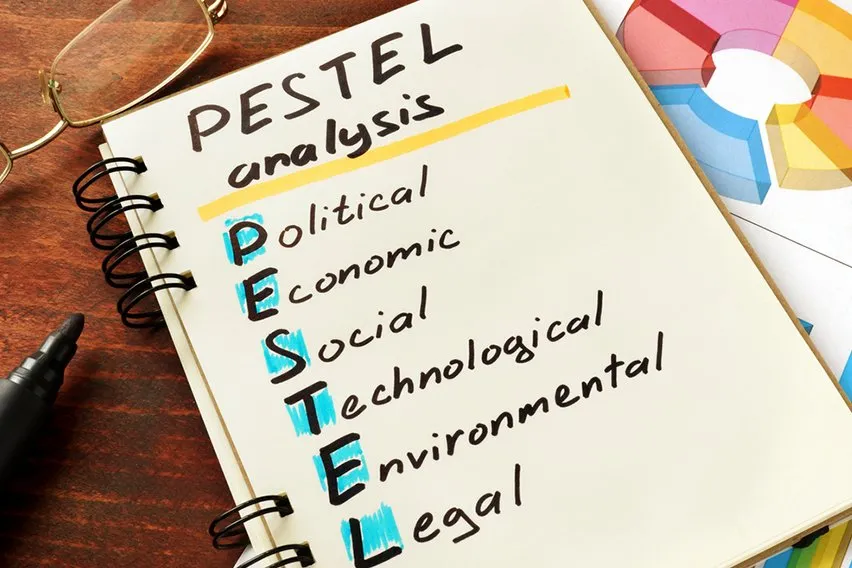Understanding the dynamics of external environments is essential for making educated decision-making and strategic planning in today’s crowded business landscape. With the variety of analytical tools that are available to evaluate these environments one stands out due to its extensive approach and strategic value: PESTEL Analysis. This article will explore the PESTEL Analysis and its impact on the qualitative analysis, strategic decision making as well as quantitative analysis.
PESTEL Analysis Defined
PESTEL Analysis, at its base, is a method of qualitative analysis which analyzes the extensive external factors that affect the operation and performance of a company. PESTEL stands for Political Economic Social Technological and Legal Factors. These six categories include various external factors that have the potential to profoundly affect the business environment.

Understanding PESTEL Analysis
PESTEL Analysis’ primary goal is to provide organizations with an understanding of their macro-environment. Through analyzing the different factors in each area, companies can pinpoint opportunities for growth and innovation while also mitigating potential threats and risks. From changes in the policies of the government and economic trends to changes in social norms and technological advancements PESTEL Analysis offers a comprehensive analysis of the external context.
Qualitative Analysis: Its Function
PESTEL Analysis is a qualitative method of analysis of financials that is more than the traditional quantitative indicators of margins and revenue. By considering factors such as the stability of the political system, social-cultural trends and environmental regulations, companies can gain insight into the wider context within which they operate. This holistic perspective will aid in establishing a solid strategic base, and help you make informed decisions aligned with your goals for the long term.
PESTEL Analysis and Practice
PESTEL Analysis can serve as a tool to help companies across all industries and sizes. PESTEL Analysis is a vital tool for mergers and acquisitions for instance, to evaluate the risks and potential opportunities of potential transactions. Investors can make better decisions when they evaluate the external factors that impact the company they are targeting, and the market overall.
PESTEL Analysis plays a crucial role in the formulation of business and operational plans. By identifying trends that are emerging and anticipating developments to come, businesses can be proactive in adjusting strategies to make the most of opportunities and reduce risks. Whether entering new markets, making new products available, or responding to regulatory changes, PESTEL Analysis provides invaluable insights that guide strategic planning and enable sustainable growth.
Integrating PESTEL analysis into financial models
PESTEL analysis is essential for financial analysis, but it’s insufficient without qualitative data. PESTEL analysis can assist analysts make more accurate financial forecasts by including external factors in their forecasts. This integration allows companies to make better financial decisions based on comprehensive understanding of internal as well as external forces. Click here Understanding PESTEL Analysis
Conclusion Utilizing PESTEL Analysis to Gain Strategic Advantage
PESTEL Analysis can be an extremely powerful tool for understanding and navigating through the complex external business environment. By systematically assessing political, economic, social, technological, environmental, and legal factors, businesses can acquire a better understanding of their business’s operating environment and make better strategic choices. PESTEL Analysis helps organizations adapt to a changing world by identifying opportunities and minimizing risk. PESTEL Analysis, which is used to guide the strategic plan and to make informed decisions, remains an essential tool for businesses in the face of ever-changing challenges and opportunities.